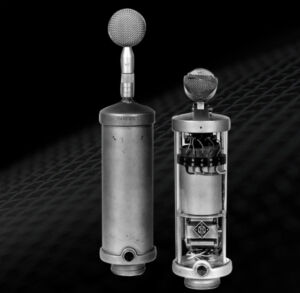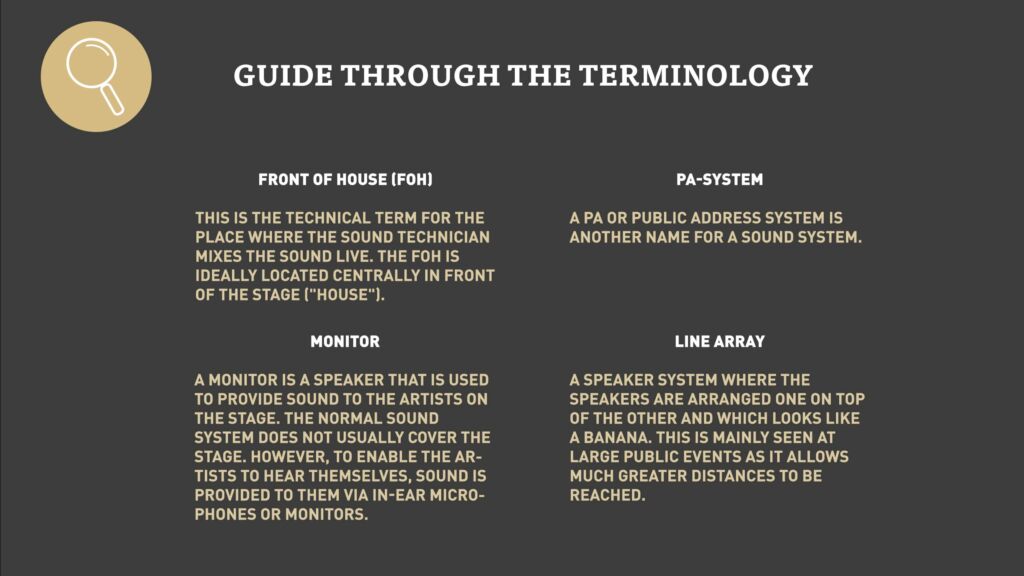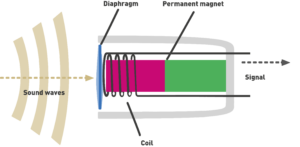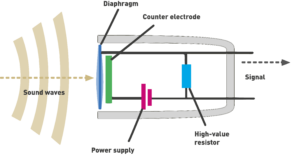Check, check, test one, two: nowadays, it’s hard to imagine any event without a microphone. But how was this little sound converter actually created, and how does it work? Here we’ll explain it to you as well as giving you the most important terms.
The development of the microphone goes hand in hand with the invention of the telephone. Several scientists, such as Antonio Meucci and Philipp Reis, had already been doing valuable fundamental work on the transmission of sound from the 1830s onwards. However, famous audiologist and inventor Alexander Graham Bell, who patented the first usable telephone system in 1876, is considered to be the forefather.

The CMV 3, also known as the “Neumann Bottle”, is the first ever mass-produced condenser microphone. (Source: Neumann)
The first microphone – a carbon microphone – was eventually created by German Georg Neumann in 1923. He brought the first industrially manufactured condenser microphone, the CMV 3, onto the market around five years later. The device weighed about 3 kilos and was 40 cm high. Incidentally, Neumann still exists as a company to this day, and is considered one of the leading manufacturers of studio microphones.

Around 100 years later, many different types of microphones are available. There is the right device for every purpose. From a technical viewpoint, we now mainly distinguish between the following types of microphone:
Dynamic microphones: Here, acoustic signals or sound waves are converted to vibrations by a converter or a coil to generate electric waves. This type of microphone also includes the moving coil microphone, the diaphragm of which is permanently connected to the coil. Dynamic microphones are usually above all suitable for use with loud instruments.

Dynamic microphone
Condenser microphones: In this microphone, an electrically insulated metal plate is attached in front of a diaphragm. An external voltage of 48 volts phantom power creates an electrical charge, which then converts the sound waves into a signal. This produces a high sound quality, so these microphones are often used in studios.

Condenser microphone
Electret microphones: This type of microphone has a similar design to the condenser microphone. The difference is that an electret foil is built in and so external voltage is required. Around 90% of all installed and manufactured microphones worldwide are electret microphones.
Is that too complex for you? No problem! It’s more important that you know which type of microphone is suitable for which application. Thus a clip-on microphone is just as unsuitable for a stage show as a directional microphone is for studio recordings.
Would you like to learn more about microphones? Then listen to our “RADAR – the Habegger podcast” with audio expert Konstantin Kommnick.
Clip-on microphone/lavalier: Used for video recordings such as reports and interviews. It is small and handy, can be attached invisibly, but can only record a concentrated sound source. In other words, it is not suitable for noisy environments. Nevertheless, it is often used at live events. As a result, the audio is difficult to handle.
Handheld microphone: A widespread microphone at events. It can be passed to people, is also suitable when there is loud background noise; and provides good sound – as long as the speaker holds the microphone accurately directly under their chin.
Headset microphone: This microphone can also often be seen at stage productions. The advantage is that the microphone is attached to the speaker’s neck, it can be kept at the ideal distance from their mouth, and they also have both hands free.
Directional microphone: A directional microphone is often seen in video productions. It is usually positioned on the camera, and is used to record additional background noises. Professional directional microphones with a large reach are also often used for wildlife films.
Our professional sound technicians will be happy to advise you.
Subscribe to our newsletter and follow us on social media.
